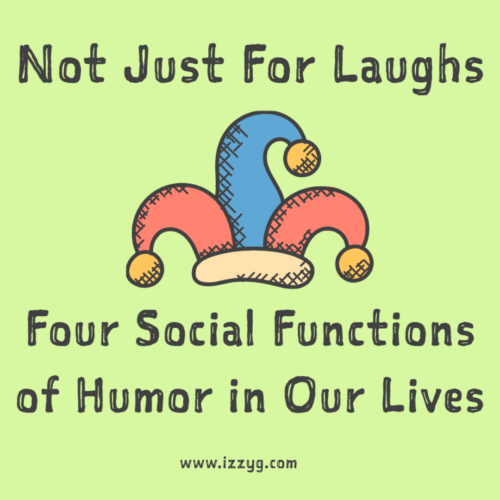I’ve been studying humor for a long time. It’s a fascinating subject that is a universal human trait, both highly esteemed and easily dismissed. My first realization that humor was more than just a descriptor for something funny came in a comedy writing and performing class I took in NYC. There I learned that comedy was a craft requiring skilled artistry; a performance artistry that involved the use of tools like formulas, imagination, metaphor, emotion, action, and intention.
The art created with these tools is, like all art, delivered from the point of view of the artist and evaluated through the visceral reaction of the audience. The currency of the comedy transaction is laughter. And even though laughter is often present in humor, it plays a different role in humor than in comedy.
How Comedy is Different from Humor
An essential difference between comedy and humor lies in the intention of each. Comedy exists for the sole purpose of getting a laugh. That’s its objective. (Unless you are Andy Kaufman or Hannah Gadsby. More on that distinction another time). The goal of humor, on the other hand, is to deliver a message. In this context, laughter is the sugar that helps the medicine go down.
Four Social Functions of Humor
So, since most of us use humor in a fair amount of our relationship and communication interactions and very few of us are comedians, knowing how humor helps or hinders our message delivery is helpful.
Here are four very different ways we use humor:
1. When we use self-deprecating humor to put ourselves down, it’s a shield. We devalue ourselves as a way of pre-empting others from doing the same.
2. When we use sarcasm or “put-down” humor to “stick it to ‘em”, “leave them speechless”, “cut them down to size,” “have the last word” or belittle someone, it’s a weapon. We devalue others to make ourselves feel better or superior.
3. When we use humor to share experiences, build empathy, spread joy or lighten someone’s load, it’s a bridge. We connect with other human beings.
4. When we use humor to distract from an uncomfortable subject area or to draw attention to our self it’s a spotlight. We understand suppliers of laughter can manipulate an audiences’ attention.
by you, at you and around you.
Process: Participants capture, categorize and catalog each instance of humor they encounter.
Materials Required: (choose a capture method) Voice recorder, Writing Implement, Camera, Phone, Paper, Tablet.
Directions: Voice your intention to be acknowledge and examine each instance of humor that you encounter during the day. Whenever you initiate humor, receive humor or chance upon it randomly, capture it. Once trapped, examine it. What was its function? Shield, weapon, bridge or spotlight? Did it achieve its purpose? Any insights come to you from understanding this instance of humor?In life, what you look for you find. When you set your “mental channel” for humor, you may well discover there is more humor in your life than you previously acknowledged. Review your humor tracker on a daily or weekly basis and you will have both a deeper understanding of how humor works, and more humorous material to share with others, which I believe is a worthwhile goal.


